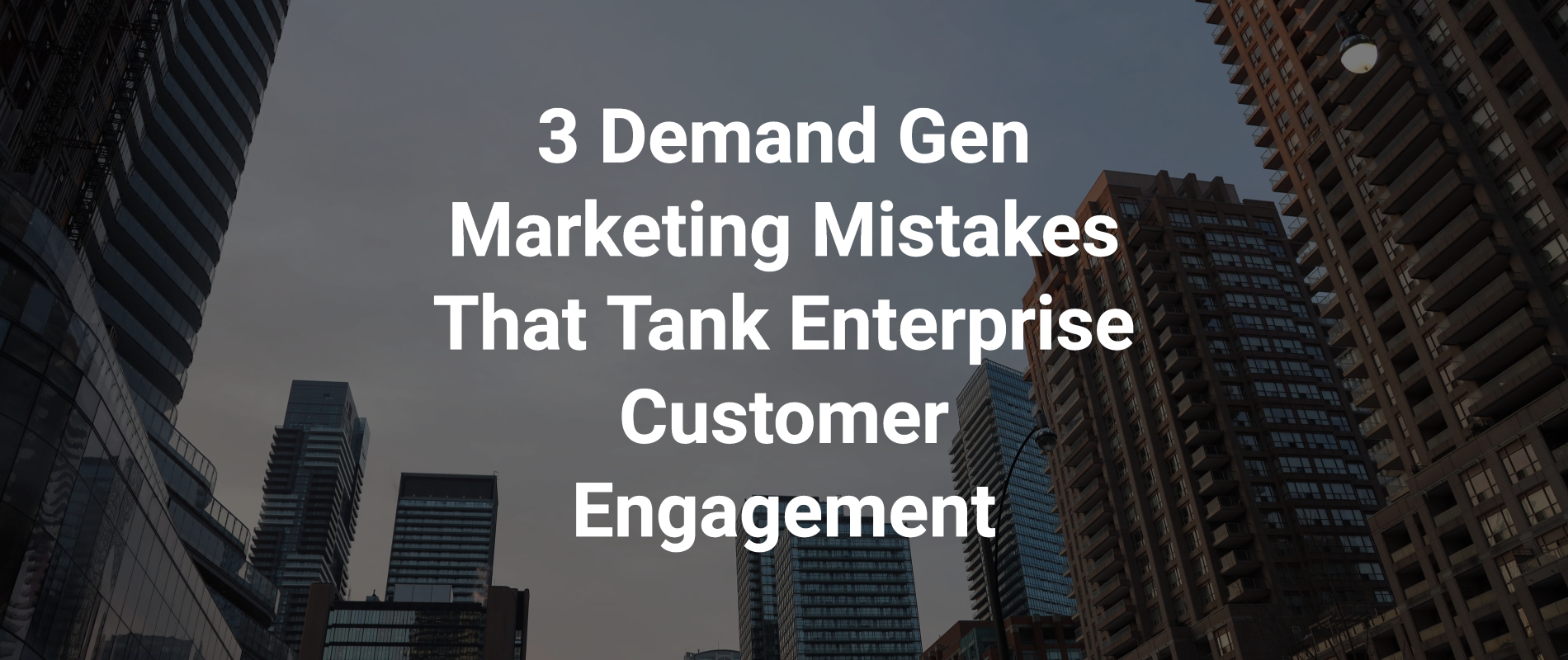Customer engagement is how you gauge marketing success on just about every level. It’s how you tell if your campaign is working, how your marketing team is performing, if you’re on track to meet your revenue goals, and if you’re effectively growing the customer relationship from transactional to meaningful.
Maybe most importantly, strong customer engagement also speaks to a better customer experience.
Delivering the right content to the right people is a critical part of improving engagement — but it’s only part of the equation. The words you use to present that content matter, too.
Read on for three mistakes I see all too often with enterprise technology demand-gen campaigns, why they may be creating friction for your leads, and how to avoid them.
1. Letting the Brand Message Lead the Charge
Your brand message is the copy you’d put up on a billboard if you could. It’s specific to your company, it differentiates you from your competitors, and it usually points straight to what you’re selling.
Here’s an example from Mastercard: There are some things money can’t buy. For everything else, there’s Mastercard.
That’s a great message. It’s compelling and sticky. But if you didn’t know anything about Mastercard — if you didn’t know you had a problem Mastercard could potentially solve for you — that would feel like a pitch.
Brand messaging has its place. In my experience, that place is right behind the customer in line for attention.
Whether you’re writing an email, a landing page, or a white paper, your first responsibility is to your audience. Who are they, what’s keeping them up at night, and how are they going about finding a solution to their problem? Connect with your audience first — then weave in your brand messaging.
2. Hitting the Sales Pitch Too Early
On the phone with a client recently, I had to laugh when she said, “I’m so glad we have you on the team. If it were up to me or the other demand-gen folks, we’d ask for the sales meeting in the first sentence!”
I can’t blame her. The company’s product is exciting. It solves a hugely expensive and scary data security problem for enterprise organizations. I want to help them get the word out, too!
But she spoke directly to a problem I see all too often: The sales message is coming much too early in the content.
You wouldn’t propose marriage on the first date — so why would a sales pitch be appropriate on the first lead touchpoint? Build a relationship with your audience before you make an ask of them.
3. Putting Cleverness Ahead of Clarity
I love the challenge of writing ads for campaigns. Fitting a punchy message that moves the viewer to click on it in 60 characters or less feels a bit like doing a brain teaser puzzle. (I love a good puzzle a little too much … I can’t do anything else until I’ve solved it, much to my family’s dismay.)
The biggest challenge with writing an ad, however, isn’t coming up with something super creative — it’s coming up with something super clear.
You see, if the viewer doesn’t have an inkling about what’s on the other side of their click, they’re unlikely to click. In these days of malware, phishing schemes, and scams, we’re a lot more suspicious of links than we used to be.
It’s more important to be clear than clever.
Clever may get you eyeballs — but it won’t get you the click.
Customer Engagement Starts Here
The words you use matter. Copy and content can be powerful tools for relationship building, value creation, and impact.
Avoid letting your brand message or a premature sales pitch get in the way of making a connection with leads — and remember that a clever message may get a chuckle, but a clear message gets a click.
